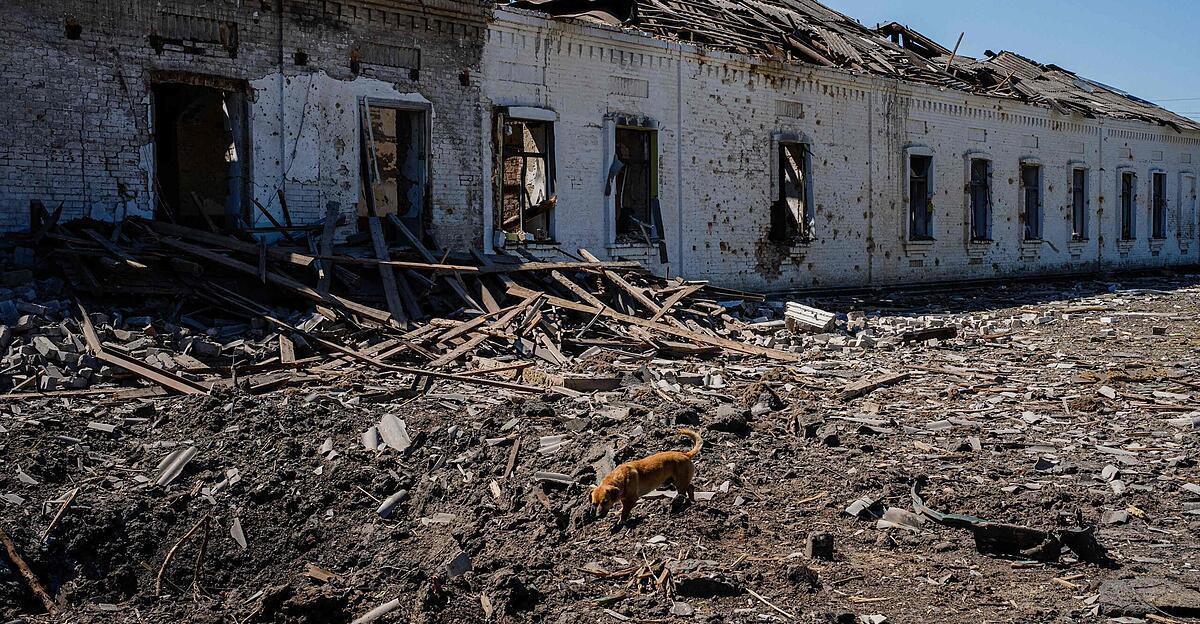Both sides have vast inventories of Soviet-era explosive devices. “You can hardly grasp the extent of this plague,” says Baptiste Chapuis from the organization Handicap International, who was recently in Ukraine. In the middle of the war, it is impossible to determine exact numbers or to map affected areas.
“From a military point of view, the war in Ukraine marks the great return of the use of mines,” says Stéphane Audrand, an expert on international risks. “They’re very useful for limiting an opponent’s movement,” explains Audrand. In addition, they can be installed quickly and easily. The explosive devices would be used en masse, mostly by the Russians.
Anti-vehicle mines belong to the category of conventional weapons. Anti-personnel mines are banned under international law and are outlawed by the 1997 Ottawa Convention, to which Ukraine, but not Russia, is a signatory.
Minefields are an element of Russian defense
“Minefields are an element of Russian defense,” according to a May report by the British research center RUSI. Moscow uses them “extensively, combining anti-tank mines and anti-personnel mines with multiple trigger mechanisms.”
Ukraine had begun destroying its mines in accordance with the Ottawa Agreement, but stopped doing so when the war in eastern Ukraine began in 2014. In January, the human rights organization Human Rights Watch reprimanded Kiev for the “obvious use” of these banned weapons in the region Isjum in the east of the country.
“Anti-personnel mines are used by everyone, but not to the same extent,” said a representative of an aid organization who wished to remain anonymous. They aim to kill or maim. Some are designed to sever limbs, while others shred the abdomen.
Deadly danger for the civilian population
Above all, however, “they have been a deadly threat to the civilian population for decades and, in the very long term, endanger the resumption of economic and social life,” says Chapuis. Experts estimate that it will take decades for the mines to be cleared.
In addition to anti-personnel and anti-tank mines, the warring parties are also massively using cluster munitions, which often remain undetected and therefore also pose a long-term threat. Cluster munitions are banned by the 2008 Oslo Convention, which neither Moscow nor Kiev have ratified.
The sea is also mined
In addition, there are self-made booby traps: “As is well known, the Russian troops are creative, they equip animals and corpses with explosive devices, set up double and triple traps on roads, fields and in forests,” according to a report by the Globsec think tank in Bratislava.
Not only the land, but also the sea is mined. “At the beginning of the conflict, the Ukrainians probably prevented the Russians from landing on their coast with mines laid in the Black Sea,” says Audrand. Sea mines are very efficient and cheap in war, but they also paralyze trade.
With the destruction of the Kakhovka dam in southern Ukraine last week, the danger from mines has increased further. The International Committee of the Red Cross (ICRC) warns that the flood has washed away the plastic mines on the banks of the Dnipro. “We used to know where it was dangerous,” says Erik Tollefsen of the ICRC. “Today we don’t know anymore.”

